Download Cryogenic Transfer Vessels User Manual
Transcript
Thermo Dewars Cryogenic Transfer Vessels Operation Manual and Parts List 700XXXX Rev. 0 © 2010 All rights reserved Printed in U.S.A. Preface Catalog numbers TY509x1 TY509X2 TY509X3 TY509X4 MANUAL NUMBER 700xxxx 0 -- 1/13/10 REV ECR/ECN DATE Thermo Scientific Original (was lt509x34) ccs DESCRIPTION By Cryogenic Transfer Vessels i Preface Important Read this instruction manual. Failure to read, understand and follow the instructions in this manual may result in damage to the unit, injury to operating personnel, and poor equipment performance. s Caution All internal adjustments and maintenance must be performed by qualified service personnel. s Material in this manual is for information purposes only. The contents and the product it describes are subject to change without notice. Thermo Scientific makes no representations or warranties with respect to this manual. In no event shall Thermo be held liable for any damages, direct or incidental, arising out of or related to the use of this manual. ©2010 Thermo Scientific. All rights reserved. ii Cryogenic Transfer Vessels Thermo Scientific Preface Important operating and/or maintenance instructions. Read the accompanying text carefully. Potential electrical hazards. Only qualified persons should perform procedures associated with this symbol. Equipment being maintained or serviced must be turned off and locked off to prevent possible injury. Hot surface(s) present which may cause burns to unprotected skin, or to materials which may be damaged by elevated temperatures. Marking of electrical and electronic equipment, which applies to electrical and electronic equipment falling under the Directive 2002/96/EC (WEEE) and the equipment that has been put on the market after 13 August 2005. This product is required to comply with the European Union’s Waste Electrical & Electronic Equipment (WEEE) Directive 2002/96/EC. It is marked with the WEEE symbol. Thermo Fisher Scientific has contracted with one or more recycling/disposal companies in each EU Member State European Country, and this product should be disposed of or recycled through them. Further information on Thermo’s compliance with this directive, the recyclers in your country and information on Thermo products will be available at www.thermo.com. 4 Always use the proper protective equipment (clothing, gloves, goggles, etc.) 4 Always dissipate extreme cold or heat and wear protective clothing. 4 Always follow good hygiene practices. 4 Each individual is responsible for his or her own safety. Thermo Scientific Cryogenic Transfer Vessels iii Preface Do You Need Information or Assistance on Thermo Scientific Products? If you do, please contact us 8:00 a.m. to 6:00 p.m. (Eastern Time) at: 1-740-373-4763 1-800-438-4851 1-740-373-4189 http://www.thermo.com [email protected] Direct Toll Free, U.S. and Canada FAX Internet Worldwide Web Home Page Service E-Mail Address Our Sales Support staff can provide information on pricing and give you quotations. We can take your order and provide delivery information on major equipment items or make arrangements to have your local sales representative contact you. Our products are listed on the Internet and we can be contacted through our Internet home page. Our Service Support staff can supply technical information about proper setup, operation or troubleshooting of your equipment. We can fill your needs for spare or replacement parts or provide you with on-site service. We can also provide you with a quotation on our Extended Warranty for your Thermo Scientific products. Whatever Thermo Scientific products you need or use, we will be happy to discuss your applications. If you are experiencing technical problems, working together, we will help you locate the problem and, chances are, correct it yourself...over the telephone without a service call. When more extensive service is necessary, we will assist you with direct factory trained technicians or a qualified service organization for on-the-spot repair. If your service need is covered by the warranty, we will arrange for the unit to be repaired at our expense and to your satisfaction. Regardless of your needs, our professional telephone technicians are available to assist you Monday through Friday from 8:00 a.m. to 6:00 p.m. Eastern Time. Please contact us by telephone or fax. If you wish to write, our mailing address is: Thermo Scientific Controlled Environment Equipment 401 Millcreek Road, Box 649 Marietta, OH 45750 International customers, please contact your local Thermo Scientific distributor. iv Cryogenic Transfer Vessels Thermo Scientific Table of Contents Thermo Scientific Section 1 Safety Information . . . . . . . . . . . . . . . . . . . . . . . . . . . . . . . . . . . . . . . . . . . .1-1 Section 2 General Description . . . . . . . . . . . . . . . . . . . . . . . . . . . . . . . . . . . . . . . . . .2-1 Section 3 Operation . . . . . . . . . . . . . . . . . . . . . . . . . . . . . . . . . . . . . . . . . . . . . . . . . . . .3-1 Filling Instructions . . . . . . . . . . . . . . . . . . . . . . . . . . . . . . . . . . . . . . .3-1 Installation . . . . . . . . . . . . . . . . . . . . . . . . . . . . . . . . . . . . . . . . . . .3-2 Withdrawal Device . . . . . . . . . . . . . . . . . . . . . . . . . . . . . . . . . . . . .3-2 Operation . . . . . . . . . . . . . . . . . . . . . . . . . . . . . . . . . . . . . . . . . . . .3-4 Removal of Liquid Discharge Device . . . . . . . . . . . . . . . . . . . . . . .3-4 Filling Instructions (8127) . . . . . . . . . . . . . . . . . . . . . . . . . . . . . . . . .3-5 Liquid Withdrawal . . . . . . . . . . . . . . . . . . . . . . . . . . . . . . . . . . . . .3-5 Measuring Liquid Nitrogen Quantity . . . . . . . . . . . . . . . . . . . . . .3-5 Low Pressure LN2 Supply Filling Method . . . . . . . . . . . . . . . . . . .3-6 Funnel Filling Method . . . . . . . . . . . . . . . . . . . . . . . . . . . . . . . . . .3-6 Liquid Withdrawal . . . . . . . . . . . . . . . . . . . . . . . . . . . . . . . . . . . . .3-7 Section 4 Specifications . . . . . . . . . . . . . . . . . . . . . . . . . . . . . . . . . . . . . . . . . . . . . . .4-1 Section 5 Valve Maintenance and Repair . . . . . . . . . . . . . . . . . . . . . . . . . . . . . . . .5-1 Ordering Procedures . . . . . . . . . . . . . . . . . . . . . . . . . . . . . . . . . . . . .5-1 Section 6 Warranty Information . . . . . . . . . . . . . . . . . . . . . . . . . . . . . . . . . . . . . . . . .6-1 Cryogenic Transfer Vessels v Section 1 Safety Information Your Thermo® Dewar has been designed with function, reliability, and safety in mind. It is the user’s responsibility to install it in conformance with local electrical codes. For safe operation, please pay attention to the warnings and cautions throughout the manual. Warning Liquid nitrogen is extremely cold; it boils at -196°C. To avoid injury caused by frostbite: 1. Use extreme care whenever handling liquid nitrogen, liquid nitrogen storage or transfer vessels, or any objects which have come in contact with liquid nitrogen. 2. Leave no areas of skin exposed. 3. Use in a well ventilated area. 4. Always wear proper safety attire over clothing: face shield, cryogenic gloves and apron. 5. Do not wear pants with cuffs. 6. Never overfill liquid nitrogen vessels. 7. Always keep liquid nitrogen vessel in an upright position. 8. Do not tightly seal liquid nitrogen containers or prevent nitrogen gas from escaping. 9. Use extreme care to prevent spilling and splashing of liquid nitrogen during transfer. 10. Immediately remove any clothing or safety attire on which liquid nitrogen has been spilled. 11. Read all filling instructions carefully. 12. Release pressure and remove liquid nitrogen before working on a vessel. 13. Get immediate medical attention for any frostbite injuries caused by liquid nitrogen. Thermo Scientific Cryogenic Transfer Vessels 1-1 Section 1 Section title Warning The venting of nitrogen vapors will create a dilution of the air’s oxygen concentration necessary to support life. Exposure to this diluted atmosphere can cause asphyxiation or even death. To avoid personal injury or death, DO NOT store or use liquid container in areas that have poor ventilation. Use in a well ventilated area. Place liquid containers outdoors or in a well ventilated area. Failure to comply with this warning may cause serious personal injury or even death. s Warning Extreme temperature and pressure are associated with the Thermo 8127. To avoid serious personal injury, observe caution when removing parts or fittings. Wear eye protection and insulated, loose fittings gloves when removing parts or fittings. Failure to comply with this warning may result in serious personal injury. s Caution DO NOT use regulators, valves, gauges, hoses, etc. that have been used in compressed air service. Failure to observe this warning could cause serious damage to your container and possible personal injury. s 1-2 Cryogenic Transfer Vessels Thermo Scientific Section 2 General Description Mechanical failure is the major cause of problems associated with liquid nitrogen storage vessels. The vessel necktube supports the full weight of the inner vessel and the liquid nitrogen it contains. A side or corner blow to the vessel causes the inner vessel to swing in a pendulum motion, damaging the neck. Any storage vessel which has been exposed to an accident, dropped, or lowered to hit on one corner, is more susceptible to failure. The Thermo 8127 have a support (top and bottom), but mishandling the vessel may still cause problems. Carefully inspect your new Thermo vessel prior to use. Check for signs of damage which may have occurred during shipment. It is advisable to fill all new units with liquid nitrogen and watch the liquid nitrogen loss rate for a few days. If there are any problems, call Thermo as soon as possible. Thermo Scientific Cryogenic Transfer Vessels 2-1 Section 3 Operation Warning Liquid nitrogen is extremely cold; it boils at -196°C. Extreme caution should be exercised when handling cryogenic liquids. Always wear proper safety attire when transferring liquid ni-trogen into or out of Thermo cylinders. Contact with a cryogenic liquid or cold gas may cause frostbite to unprotected areas of the body. Protect eyes and skin when transferring liquid. Stand clear of vent during filling. Loose fitting, insulated gloves and long sleeves are recommended for arm protection. Cuffless pants should be worn outside boots or overshoes to shed spilling liquid. Goggles or face shields shouldbe worn if the possibility of splashing liquid exists. Failure to observe this warning may lead to severe burns or eye injuries. s Caution Never overfill your Thermo dewar with liquid nitrogen. Filling the tank up to or above the bottom of the necktube may cause immediate or premature vacuum failure. s Filling Instructions To avoid damage to your Thermo cryogenic vessel (Thermo® 5, 10, 20 and 30), which may result in premature vacuum loss, it is important that the following procedure be used during the addition of liquid nitrogen to a warm vessel and on subsequent additions. 1. Add only a small amount of liquid nitrogen (5-10 liters) to new or warm vessels. 2. Allow this small amount of liquid nitrogen to sit in the covered vessel for a minimum of 2 hours. This will limit stress caused by the sudden temperature change associated with adding liquid nitrogen to a warm vessel. 3. Fill your vessel to the desired level. 4. If you are filling your Thermo dewar from a pressurized source, make sure that the source tank is at a low pressure (22 PSI or below). 5. If the transfer hose is used for extracting liquid nitrogen from a pressurized liquid source, always use a phase separator at the end of the hose (see Parts List for transfer hoses and phase separators). 6. Remember to always wear proper safety attire over clothing, including: face shield, cryogenic gloves and apron. Thermo Scientific Cryogenic Transfer Vessels 3-1 Section 3 Operation Withdrawal Device The liquid discharge device provides liquid nitrogen for filling cold traps and smaller dewars without having to scoop out or pour liquid nitrogen from the vessel. The liquid discharge device utilizes the normal evaporation of the cryogenic liquid to pressurize a container by plugging the neck of the vessel and forming a hermetic seal. The pressurized vessel can then decant product through the liquid discharge device. Figure 1 shows a drawing of the liquid discharge device. The primary components of the liquid discharge device are listed below: Rubber Stopper: Provides a seal against the walls of the necktube. Tightening the wingnut expands the rubber stopper. Pressure Gauge: Indicates the pressure inside the container. Relief Valve: Relieves pressure inside the container automatically when excessive pressure is reached.The relief valve is a safety device and cannot be adjusted. Vent Valve: Provides means to vent product. The vent valve can be closed to pressurize the vessel or opened to depressurize the vessel. Discharge Valve: Allows product to flow out of the vessel through the discharge device spout. Safety Cable: Prevents discharge device from accidently exiting completely from vessel. Installation Perform the following steps to install the liquid discharge device on a vessel: 1. Attach the discharge device spout to the liquid discharge device (refer to Figure 1 for location). A transfer line can be used in place of the discharge device spout. 2. Verify that the rubber stopper is dry and free from grease and other contaminants. Check for nicks and gouges that may impair normal operation. 3. Verify that the cable is in good working condition. 4. Verify that the vent anddischargevalves turnfreely. 5. Loosen wingnut. 6. Lower discharge device into vessel. As the discharge device is lowered, the nitrogen in the vessel will boil until the diptube has cooled down. The boiling action is normal. Continue lowering until the rubber stopper fits snugly. 3-2 Cryogenic Transfer Vessels Thermo Scientific Section 3 Operation Installation (continued) 7. Tighten the wingnut until it contacts the washer. Tighten wingnut another 1½ to 2 turns (EXT RBR versions 4-5 turns). Caution Tighten the wingnut finger-tight only, do not use any tools. Tightening the wingnut expands the rubber stopper against the necktube of the vessel. Excessive tightening may damage the necktube. s 8. Clip the safety cable to the vessel handle. 9. Close the vent valve and the discharge valve. Pressurewill slowly begin to build. Several hours will be required to achieve sufficient pressure to operate the liquid discharge device. Pressure buildup can be accelerated by gently tipping the vessel at 45°angle. Caution Excessive pressure can rupture the vessel. s Figure 3-1. Components Thermo Scientific Cryogenic Transfer Vessels 3-3 Section 3 Operation Operation Perform the following steps to withdraw liquid from the vessel using the liquid discharge device: 1. Turn the discharge valve fully open and then turn back the valve a half turn. Do not leave the valve in the fully open position. 2. Close the discharge valve to end liquid withdrawal. Warning Cryogenic liquids are extremely cold and can cause sever burns similar to frostbite. See CGA Bulletin No.P-12 Safe Handling of Cryogenic Liquids. (This bulletin may be ordered from Compressed Gas Ass’n., 4221 Walney Road, 5th floor, Chantilly, VA 20151.) s Warning Nitrogen vapors in air may dilute the concentration of oxygen necessary to support or sustain life. Exposure to such oxygen deficient atmosphere can lead to unconsciousness and serious injury ,including death. s Warning Modifying safety valves on discharge devices causes potentially hazardous conditions. s Removal of Liquid Discharge Device Perform the following steps to remove the liquid discharge device from the vessel: 1. Open the vent valve to remove all pressure. 2. Verify that the pressure gauge reads 0. Warnings Vessel must be completely vented before removing the discharge device. Any attempt to remove the discharge device before the vessel is completely vented may result in serious personal injury. 3. Release wingnut. 4. Rock discharge device from side to side to free stopper. 5. Pull discharge device from vessel. 6. When stopper has passed rim of vessel, unclip safety cable. 7. Store liquid discharge device in a clean and dry area. 8. Cover vessel. 3-4 Cryogenic Transfer Vessels Thermo Scientific Section 3 Operation Measuring Liquid Nitrogen Quantity 1. Use a wooden dipstick. Never use a hollow tube or plastic dipstick to measure liquid nitrogen. 2. The liquid level will be indicated by a frostline which develops when the dipstick is removed. Liquid Withdrawal 1. Liquid withdrawal for Thermo 5 through Thermo 30 is always performed by pouring or utilizing a withdrawal device (for withdrawal devices, see Parts List). The withdrawal device pressurizes to approximately 4 PSI; the pressure forces liquid up the withdrawal tube and out the valve. 2. Always wear proper safety attire. Warning Liquid nitrogen is extremely cold; it boils at -196°C. Extreme caution should be exercised when handling cryogenic liquids. Always wear proper safety attire when transferring liquid nitrogen into or out of Thermo cylinders. Contact with a cryogenic liquid or cold gasmay cause frostbite to unprotected areas of the body. Protect eyes and skin when transferring liquid. Stand clear of vent during filling. Loose fitting, insulated gloves and long sleeves are recommended for arm protection. Cuffless pants should be worn outside boots or overshoes to shed spilling liquid.Goggles or face shields should be worn if the possibility of splashing liquid exists. Failure to observe this warning may lead to severe burns or eye injuries. s Filling Instructions (8127) Thermo Scientific To avoid damage to your dewar, it is important that only the two following methods be used to fill your 8127. Failure to follow each step may result in damage which is not covered under the warranty. Read all instructions carefully. Should questions arise, please contact Technical Services. Cryogenic Transfer Vessels 3-5 Section 3 Operation Funnel Filling Method The 8127 cylinders can be filled by removing the brass plug on the top center of the tank and inserting a funnel through the hole. Liquid nitrogen can then be poured directly into the cylinder through this hole. Be sure to stand clear of the vent during filling and always wear proper safety attire while handling liquid nitrogen. 1. Open vent valve completely, releasing any pressure built up inside the cylinder. 2. Remove brass plug located on the top center of the cylinder. 3. Insert funnel into hole. 4. Pour liquid nitrogen into cylinder until level gauge reads 7/8 full or until liquid nitrogen begins spitting from the vent valve. 5. Reinsert and tighten the brass plug. 6. Close vent valve completely. Low Pressure LN2 Supply Filling Method The 8127 liquid nitrogen cylinders can be filled from a pressurized source of liquid nitrogen by attaching a transfer hose to the liquid withdrawal valve on the Thermo cylinders. The liquid nitrogen source pressure must not exceed 45 PSI. Please read all instructions carefully before filling. 1. Attach transfer hose from liquid nitrogen source to the liquid withdrawal valve on the Thermo cylinder. 2. Open withdrawal valve on Thermo cylinder completely. 3. Open withdrawal valve on liquid nitrogen source. Liquid nitrogen source pressure must not exceed 45 PSI, since damage to Thermo cylinder gauges will occur. Optimum feed pressure is 35 PSI. 4. Open vent valve on Thermo cylinder until the pressure gauge on Thermo cylinder reads 22 PSI. 5. Continue to fill until Thermo cylinder weight is 180 pounds for the 8127. If the scale method is not possible, fill until liquid nitrogen begins spurting from vent valve. 6. Shut liquid nitrogen source valve completely. 7. Shut liquid nitrogen withdral valve on Thermo cylinder completely. 8. Carefully remove transfer hose from the Thermo cylinder. Some liquid nitrogen will remain in the hose under pressure after filling 9. Close vent valve completely. 3-6 Cryogenic Transfer Vessels Thermo Scientific Section 3 Operation Caution Overfilling cylinders may result in damage to the level and pressure gauges. If overfilling should occur, remove excess liquid nitrogen by opening the liquid nitrogen withdrawal valve immediately. s Liquid Withdrawal The 8127 are to be used only for low pressure liquid withdrawal. The primary relief valve is factory set at 22 PSI. The secondary safety relief is set at approximately 35 PSI. Transferring liquid at higher pressures increases the flash-off rate of the liquid and adds to the risk of sparking. To transfer liquid, attach the transfer hose or withdrawal spout to the liquid connections (see accessory sheet). Slowly open the liquid valve to flow the liquid. The liquid will vaporize at first until the transfer line or withdrawal valve cools down. If using a transfer hose to extract liquid from the 8127 into an open dewar, a phase separator is recommended on the end of the transfer line. Transfer pressure should be kept to a minimum. The normal evaporation of the liquid will usually maintain enough pressure for transferring. Caution If the liquid or vent valves are not closed, the container can become contaminated after being emptied. s Thermo Scientific Cryogenic Transfer Vessels 3-7 Section 4 Specifications Vessel Specs for Thermo Dewars and Cylinders Thermo Scientific Diameter - inches (cm) 8.8 (22.4) 10.3 (26.2) 14.5 (36.8 17.0 (43.2) Height - inches (cm) 18.2 (46.2) 21.5 (54.6) 24.7 (62.7) 24.0 (61.2) Neck Diameter - inches (cm) 2.2 (5.6) 2.2 (5.6) 2.0 (5.0) 2.5 (6.4) Full Weight - pounds (kg) 17.0 (7.7) 31.0 (14.1) 55.0 (25) 82.0 (37.3) Empty Weight - pounds (kg) 8.0 (3.6) 12.0 (5.5) 19.0 (8.6) 27.0 (11.6) Static Evaporation Rate (liters/day) .15 .18 .18 .22 Static Holding Time (days) 33.3 55.6 111.0 145.0 Liquid Nitrogen Capacity (liters) 5.0 10.0 21.0 32.0 Catalog Number TY509X1 TY509X2 TY509X3 TY509X4 Cryogenic Transfer Vessels 4-1 Section 5 Valve Maintenance and Repair When a defective valve is suspected, follow this procedure to repair it: 1. Void the tank of liquid product and release any pressure that is in the container. 2. If the vent valve must be repaired, allow it to warm-up before disassembling. 3. Remove the valve handle screw, washer, retainer cap and spring assembly. 4. Remove the valve handle and teflon thrust washer. 5. Unscrew the bonnet to remove the stem and stem seal. 6. Pull out the body insert and plug assembly. 7. Clean the seat. 8. Replace parts as needed and reassemble in reverse order. Ordering Procedures Please refer to the Specification Plate for the complete model number, serial number, and series number when requesting service,replacementparts or in any correspondence concerning this unit. All parts listed herein may be ordered from the Thermo Scientific dealer from whom you purchased this unit or can be obtained promptly from the factory. When service or replacement parts are needed, we ask that you check first with your dealer. If the dealer cannot handle your request, then contact our Technical Services Department. Prior to returning any materials, please contact Technical Services for a “Return Materials Authorization” number (RMA). Material returned without an RMA number will be refused. AYX49 Rubber gasket for Thermo 30 Thermo Scientific Cryogenic Transfer Vessels 5-1 Thermo Scientific Rev. 4 4/09 REGISTERED ISO 9001 If equipment service is required, please call your Technical Services Department at 1-800-438-4851 (USA and Canada) or 1-740-373-4763. We're ready to answer your questions on equipment warranty, operation, maintenance, service and special application. Outside the USA, contact your local distributor for warranty information. Your local Thermo Sales Office is ready to help with comprehensive site preparation information before your equipment arrives. Printed instruction manuals carefully detail equipment installation, operation and preventive maintenance. THIS WARRANTY IS EXCLUSIVE AND IN LIEU OF ALL OTHER WARRANTIES, WHETHER WRITTEN, ORAL OR IMPLIED. NO WARRANTIES OF MERCHANTABILITY OR FITNESS FOR A PARTICULAR PURPOSE SHALL APPLY. Thermo shall not be liable for any indirect or consequential damages including, without limitation, damages relating to lost profits or loss of products. Replacement or repair of components parts or equipment under this warranty shall not extend the warranty to either the equipment or to the component part beyond the original warranty period. The Technical Services Department must give prior approval for return of any components or equipment. At Thermo's option, all non-conforming parts must be returned to Thermo postage paid and replacement parts are shipped FOB destination. During the first year, component parts proven to be non-conforming in materials or workmanship will be repaired or replaced at Thermo's expense, labor included. LN2 Vacuum Integrity is covered for two years. Installation and calibration are not covered by this warranty agreement. The Technical Services Department must be contacted for warranty determination and direction prior to performance of any repairs. Expendable items, glass, filters and gaskets are excluded from this warranty. The Warranty Period starts two weeks from the date your equipment is shipped from our facility. This allows for shipping time so the warranty will go into effect at approximately the same time your equipment is delivered. The warranty protection extends to any subsequent owner during the first year warranty period. THERMO FISHER SCIENTIFIC STANDARD PRODUCT WARRANTY (LN2 Vacuum) Section 6 Warranty Information Cryogenic Transfer Vessels 6-1 6-2 Cryogenic Transfer Vessels Rev. 4 2/09 REGISTERED ISO 9001 Contact your local distributor for warranty information. We’re ready to answer your questions on equipment warranty, operation, maintenance, service and special application. Your local Thermo Sales Office is ready to help with comprehensive site preparation information before your equipment arrives. Printed instruction manuals carefully detail equipment installation, operation and preventive maintenance. THIS WARRANTY IS EXCLUSIVE AND IN LIEU OF ALL OTHER WARRANTIES, WHETHER WRITTEN, ORAL OR IMPLIED. NO WARRANTIES OF MERCHANTABILITY OR FITNESS FOR A PARTICULAR PURPOSE SHALL APPLY. Thermo shall not be liable for any indirect or consequential damages including, without limitation, damages relating to lost profits or loss of products. Replacement or repair of components parts or equipment under this warranty shall not extend the warranty to either the equipment or to the component part beyond the original warranty period. The Technical Services Department must give prior approval for return of any components or equipment. At Thermo's option, all non-conforming parts must be returned to Thermo postage paid and replacement parts are shipped FOB destination. During the first year, component parts proven to be non-conforming in materials or workmanship will be repaired or replaced at Thermo's expense, labor excluded. Installation and calibration are not covered by this warranty agreement. The Technical Services Department must be contacted for warranty determination and direction prior to performance of any repairs. Expendable items, glass, filters, reagents, tubing, and gaskets are excluded from this warranty. The Warranty Period starts two months from the date your equipment is shipped from our facility. This allows for shipping time so the warranty will go into effect at approximately the same time your equipment is delivered. The warranty protection extends to any subsequent owner during the first year warranty period. Dealers who stock our equipment are allowed an additional six months for delivery and installation, provided the warranty card is completed and returned to the Technical Services Department. THERMO FISHER SCIENTIFIC INTERNATIONAL DEALER WARRANTY Section 6 Warranty Information Thermo Scientific Thermo Scientific Controlled Environment Equipment 401 Millcreek Road Marietta, Ohio 45750 United States www.thermofisher.com





















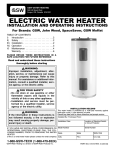
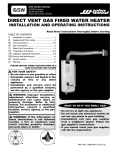

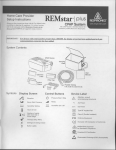
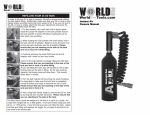
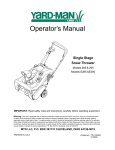
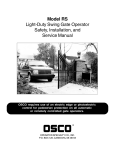
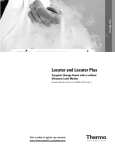

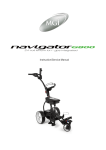
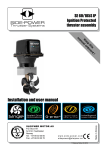


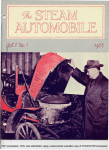
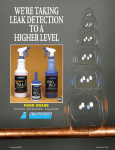

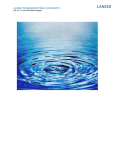
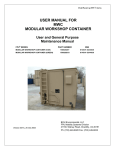
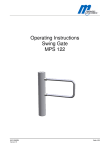
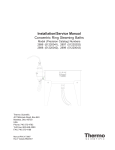
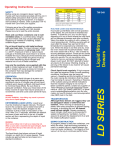
![TSD Series -40C ULT User Manual [EN]](http://vs1.manualzilla.com/store/data/005634658_1-66c9db561a67486106446026c707a26c-150x150.png)